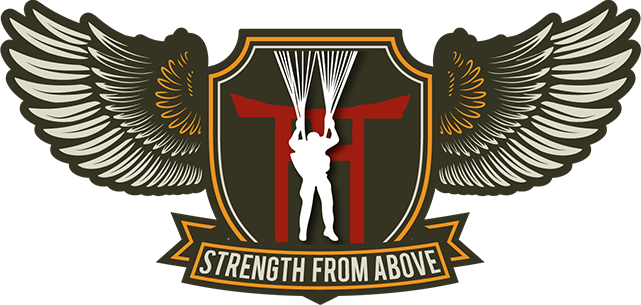God, the Angels and 2 World War II Miracles - 2. The Miracle at Los Baños
Article Index
The Miracle at Los Baños
While the Angels were busy fighting the enemy in Leyte's mountains, another group was fighting for their lives on the island of Luzon to the north.
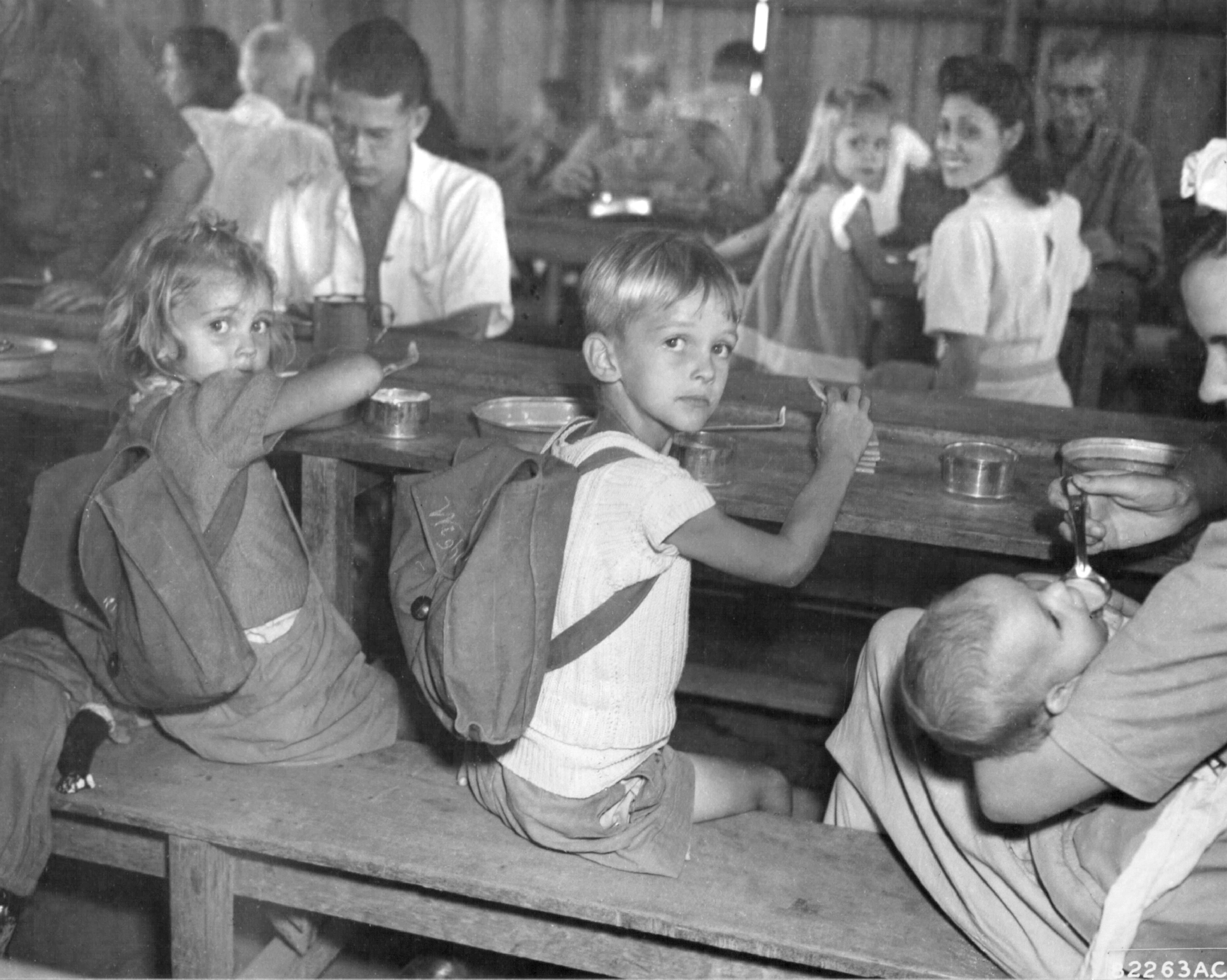 When the enemy invaded the Philippines in 1941-1942, the Japanese rounded up all foreign men, women and children and put them in internment camps like the famous one at Santo Tomas University. These were mainly civilians whose only "crime" was not being of Asian decent and if you'd like to learn more about them, please view our in-depth article on the full story of the Los Baños Raid which we are going to abbreviate here with a specific emphasis on the power of God made manifest at this camp.
When the enemy invaded the Philippines in 1941-1942, the Japanese rounded up all foreign men, women and children and put them in internment camps like the famous one at Santo Tomas University. These were mainly civilians whose only "crime" was not being of Asian decent and if you'd like to learn more about them, please view our in-depth article on the full story of the Los Baños Raid which we are going to abbreviate here with a specific emphasis on the power of God made manifest at this camp.
The internment camp at Los Baños sat on the southern shore of Luzon's Laguna de Bay, fifteen miles behind enemy lines in February of 1945, and was filled with businessmen, mechanics, teachers, bankers, nuns, priests, and wives and children of military personnel who had been stationed on Luzon at the war's beginning and were given personal space in the barracks of three fight by three feet by seven feet. Eleven internees were Navy nurses, the “Angels of Bataan”, and after three years of internment, by Christmas of 1944, they were all facing starvation, illness and the dark hand of oppression.
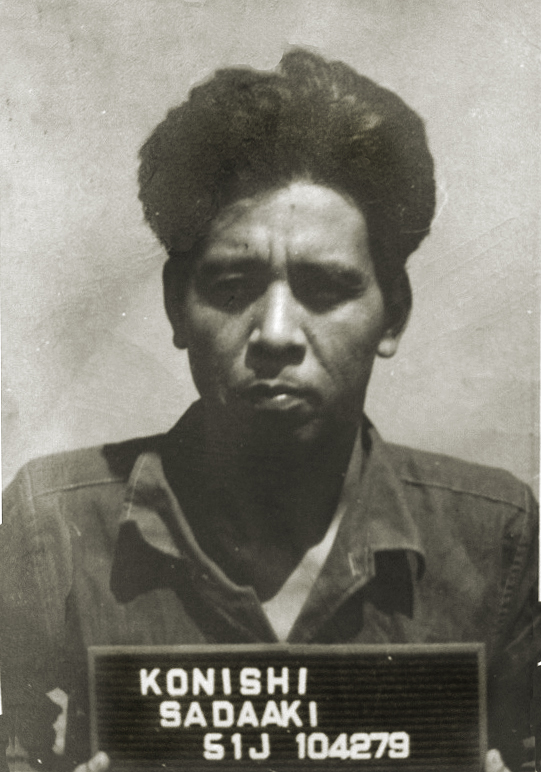 Much of the persecution came from the camp's second in command twenty-nine-year-old Lieutenant Sadaaki Konishi, who hated Caucasians and had been a soldier in the regular army (65th Infantry Brigade), but due to health issues (tuberculosis) was assigned to Japan’s POW and internee camp administration. Konishi oversaw supply at Los Baños and while the internees were originally allowed the use the grounds of the former agricultural college to grow gardens for sustenance, by 1944 Konishi had restricted such activities and reduced the prisoners' rations to a near-starvation level. Indeed, Konishi vowed that the internees would be "eating dirt before he was through with them." By January of 1945, he had reduced the prisoners’ diet to less than 450 calories a day, roughly the equivalent to three granola bars.
Much of the persecution came from the camp's second in command twenty-nine-year-old Lieutenant Sadaaki Konishi, who hated Caucasians and had been a soldier in the regular army (65th Infantry Brigade), but due to health issues (tuberculosis) was assigned to Japan’s POW and internee camp administration. Konishi oversaw supply at Los Baños and while the internees were originally allowed the use the grounds of the former agricultural college to grow gardens for sustenance, by 1944 Konishi had restricted such activities and reduced the prisoners' rations to a near-starvation level. Indeed, Konishi vowed that the internees would be "eating dirt before he was through with them." By January of 1945, he had reduced the prisoners’ diet to less than 450 calories a day, roughly the equivalent to three granola bars.
When asked about the internees' destitution, Konishi simply said, "Let them starve."
After the last Red Cross food package came on December 23, 1943, the internees took to eating cats, dogs, rats, and then eventually weeds, flowers, vines, salamanders, slugs, and grubs to survive. Parents would occasionally forgo their own meager meals or moldy rice or watery soup to feed their children, mother's sold precious heirlooms to buy canned milk for their babies (of which 18 were born in the camp), and some brave men snuck out of the camp at night to buy or beg for food for their loved ones back in the camp. Anyone caught doing this was executed by Konishi's guards (and several were).
A young internee, Margaret Whitaker, would write in her secret (and forbidden) journal, "The grave diggers are working overtime. The Army must come soon."
As a sign of their devotion, and a quiet defiance of their captors, one of the clergy from Canada made a nativity set out of clay and several priest and nuns cut ornaments out of tin cans for their "Christmas tree".
Ironically, the camp's reduced rations and increasing malice of the guards was a positive sign as it meant that the Allies were winning the war. But there are many additional accounts that attest to Konishi's cruelty towards the camp's poor inhabitants, all of which are heart-breaking. I cannot imagine what it would be like to face such adversity during such times of war. To be kicked out of one's home and taken to an ad-hoc internment camp by an enemy who felt 100% justified in treating you as less than human... It helps me gain a clearer picture of the sufferings of the Apostle Paul or many of the early members of Christ's church who endured so much persecution for their faith. And many at Los Baños had strong faith and labored each day to not only survive, but to "endure hardness, as a good soldier of Jesus Christ." (2 Timothy 2:8).
The camp doctor Dana Nance along with a handful of nurses, including The Sacred Eleven, did their best to take care of the internees' health needs, but it was a herculean task given their meager supplies and lack of support from the Japanese. By the end, seventy percent of the internees were suffering from beriberi, dysentery, and malnutrition. Working twelve hours a day, Nance and The Sacred Eleven treated an average of 200 patients a day, dealing with everything from the aforementioned tropical diseases to dehydration, broken bones to stitching up cuts. Dr. Nance even performed an appendectomy on a patient, without anesthetic, who lived! The nurses mixed tree sap to create bandage adhesive, made slings from donated scraps and used the tops of cut beer bottles to create patient "bells" which could be rung to get their attention.
No wonder one internee later testified, "We are absolutely certain that had it not been for [those] nurses, many of us who are alive and well would have died."
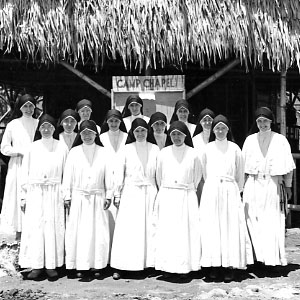 Death was a common companion at Los Baños, and was the specter that hung over every internee's head. So while Dr. Nance and the nurses labored to keep their physical bodies alive, the camp was full of three hundred missionaries, Catholic priests, nuns and other clergy from thirty-three congregations that the Japanese had rounded up in the summer of 1944. Their section of camp was dubbed "Vatican City" while the rest of the enclosure was "Hell’s Half-Acre". With so many clerics interned, Los Baños had over 130 Masses a day in their makeshift "chapel" and several internees would later say that their faith in God was cemented during the trials of Los Baños.
Death was a common companion at Los Baños, and was the specter that hung over every internee's head. So while Dr. Nance and the nurses labored to keep their physical bodies alive, the camp was full of three hundred missionaries, Catholic priests, nuns and other clergy from thirty-three congregations that the Japanese had rounded up in the summer of 1944. Their section of camp was dubbed "Vatican City" while the rest of the enclosure was "Hell’s Half-Acre". With so many clerics interned, Los Baños had over 130 Masses a day in their makeshift "chapel" and several internees would later say that their faith in God was cemented during the trials of Los Baños.
In what was obviously an attempt at image control, the Japanese declared that the clergy were heading to Los Baños because they were laughably guilty of, "espionage, insincerity, dishonesty, and a list of other crimes."
Although everyone was growing weaker by the day at Los Baños, many of the missionaries and priests also held Bible studies and several nuns volunteered in the "hospital" to help take care of the sick and dying. Prayer became a lifeline for countless in the camp, and one day when internee Carol Terry (later Terry-Talbot) felt a deep need to connect with Deity, she walked into the camp's "chapel" and bowed her head. After many tears and quiet pleadings, she felt a quiet voice whisper through her internal storm, "Peace, be still."
Things continued to grow more dire in the camp, however, and in late 1944, one Catholic priest declared humbly, "If we’re going to get out of this alive, we better pray."
A faithful nun replied, "If we’re going to get out of this alive, God will have to send the angels."
He would. The Angels were coming.
Those Angels were the 11th Airborne Division which had landed on Luzon in early February and was busy fighting in the Battle for Manila. The Angels knew about Los Baños, having been apprised of the internees' situation by local Filipinos, including guerilla groups that were fighting alongside the 11th Airborne. But when some of the guerillas sent word that the Japanese were digging a huge trench at Los Baños and that the guards were preparing the massacre the internees, the Angels quickly put a plan together for 0700 on February 23, 1945.
It was an ingenious plan that involved a blocking force that would engage superior Japanese forces stationed outside the camp to the northwest while the Angels' recon unit and Filipino guerillas eliminated the camp's machine gun nests and guards on the perimeter. At the same time, B Company of the 511th Parachute Infantry Regiment would jump at 500-400 feet and rush to help eliminate the camp's guards.
To strengthen their faith and further plead for Heaven's intervention after the Japanese closed the Weed Patch to the internees (they ate weeds to survive), on February 22, 1945, Catholic Bishop Jurgens directed the priests and nuns to have exposition of the Blessed Sacrament and public recitations of the Rosary throughout the day. Sister Miriam Louise Kroeger, a Maryknoll nun, noted that because her hands were too weak to move from bead to bead, she wrapped her Rosary around her wrist.
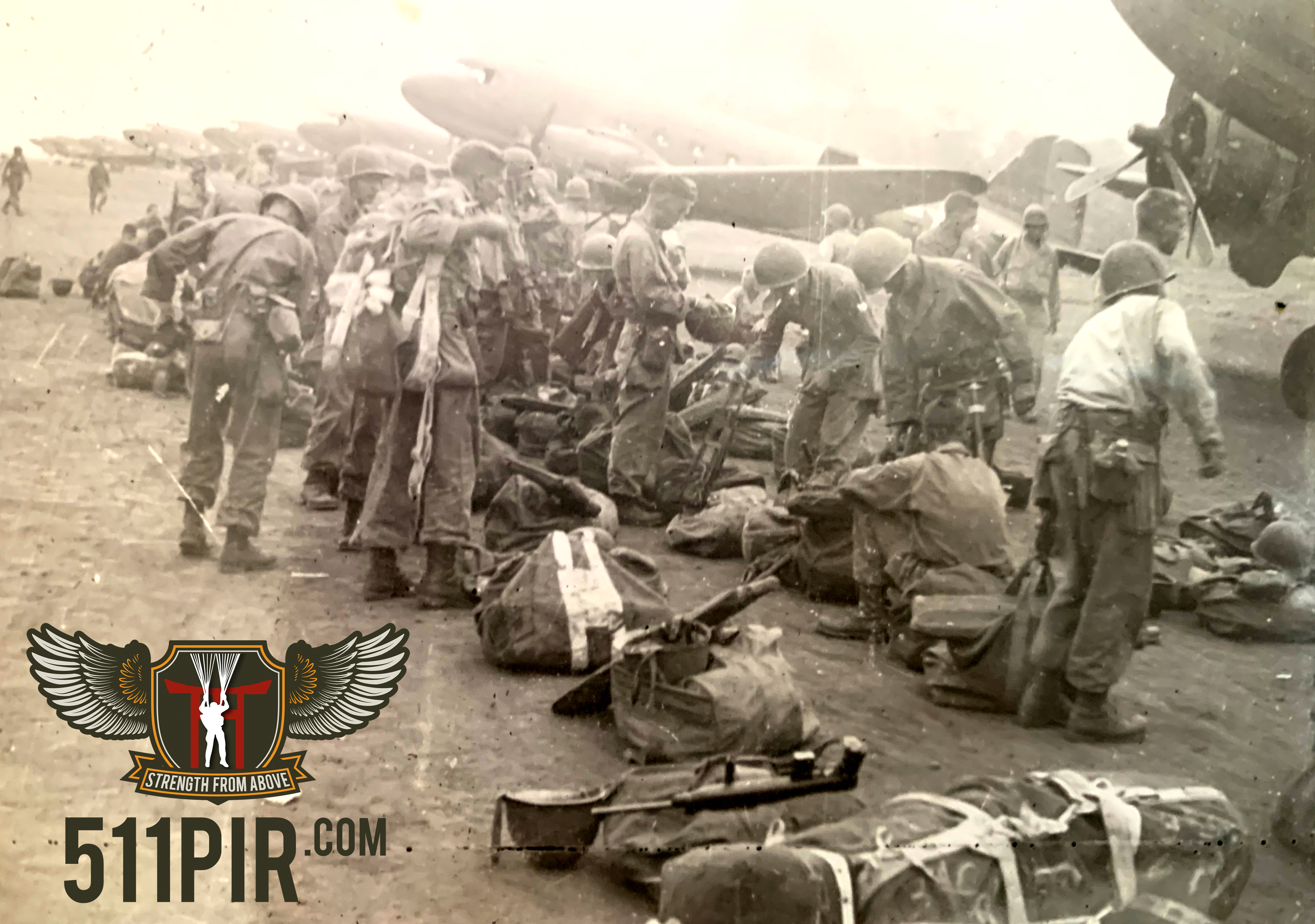 On the second day of the exposition, just as Bishop Jurgens began approaching the altar, the sound of planes filled the air and some priests and nuns rushed to the windows to watch B Company's white parachutes billow open just outside the camp. Several cried out that they looked like angels from heaven and Sister Kroeger added to the notion, saying of the paratroopers, "We thought each soldier an angel, and a giant one at that. They were massive compared to our malnourished men in camp."
On the second day of the exposition, just as Bishop Jurgens began approaching the altar, the sound of planes filled the air and some priests and nuns rushed to the windows to watch B Company's white parachutes billow open just outside the camp. Several cried out that they looked like angels from heaven and Sister Kroeger added to the notion, saying of the paratroopers, "We thought each soldier an angel, and a giant one at that. They were massive compared to our malnourished men in camp."
She also mentioned that when a Japanese machine gun opened up, "We hit the floor and prayed."
Sister Maria del Rey Danforth remembers the paratrooper who soon rushed into their quarters and exclaimed, "Won’t my mother be proud when I tell her I rescued the sisters!"
Another exultant nun threw her arms around one of their rescuers and thanked him profusely, to which the young paratrooper responded, "Hold your horses a second, sister, and I'll be right back!" And off he went to help clear the camp of any remaining enemy. As the excitement died down, the soldier, a devout Catholic, turned to greet the now shy nun who had greeted him so happily and bestowed upon him such un-nunlike affections.
The Angels were shocked by the internees' ragged conditions. Most were so emaciated their worn, patched clothing hung off their frames and their homemade sandals seemed ill-fitting. Many of the adults were slightly hunched over from malnutrition and the children in the camp gripped the Americans' heartstrings.
With their liberation becoming more real by the second, several clergy fell to their knees to thank God which caused one rescuing Angel to put a hand on a minister’s shoulder, urging, "Come on, Father; let’s get the hell out of here." And they did have to hurry; there were between 8,000-10,000 troops of Japan’s 8th "Tiger" Division were camped just across the San Juan River and could wipe out both the rescuers and the rescued.
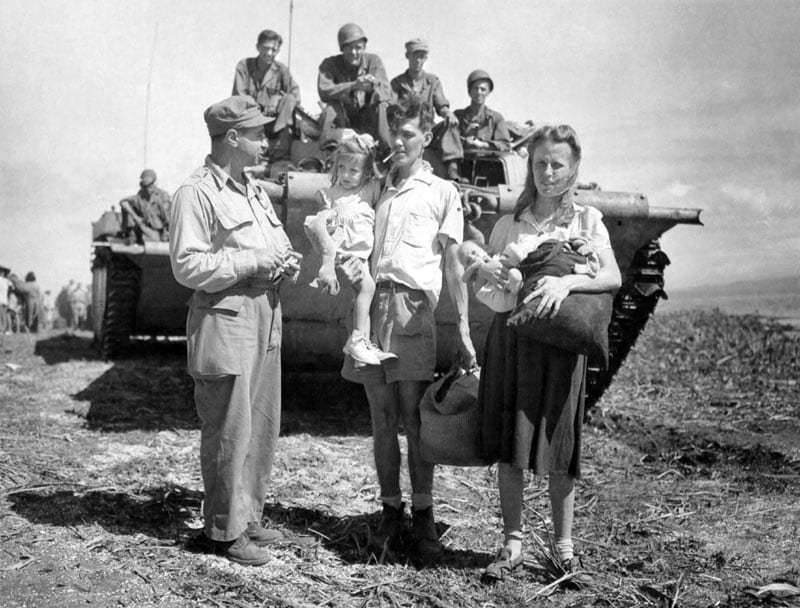 Amazingly, it all went off without a hitch and the Angels were able to bring the internees out of the camp on foot or AmTracs (Amphibious Tractors) which brought some laughs and smiles in the tense "March Towards Freedom." As the liberated internees and their rescuers marched down the road towards the shores of Laguna de Bay, one of the Amtracs came rumbling down the road loaded with nuns. The vehicle bore the self-imposed nickname of its driver’s fiancée: "Impatient Virgin".
Amazingly, it all went off without a hitch and the Angels were able to bring the internees out of the camp on foot or AmTracs (Amphibious Tractors) which brought some laughs and smiles in the tense "March Towards Freedom." As the liberated internees and their rescuers marched down the road towards the shores of Laguna de Bay, one of the Amtracs came rumbling down the road loaded with nuns. The vehicle bore the self-imposed nickname of its driver’s fiancée: "Impatient Virgin".
The last AmTracs departed just as enemy forces arrived and tried to fire on the raiders and their charges. Thrilled with their success, the Angels and the AmTracs crews ferried everyone across Laguna de Bay to friendly lines and by everyone, I mean everyone. Not a single internee or 11th Airborne Angel was lost in the attack and anyone who has been in such a combat operation will understand just how impossible that is without God's direct intervention, in the opinion of many who were there.
As Lieutenant John Ringler, B Company's commander, later wrote, "One point of the operation that I have never understood is how could you have over two thousand persons in the target area and live fire coming in from four sides and yet not have a casualty within the camp. It is actions like this that makes us think of Who controls our destiny."
Considering that B Company had been told that success would be declared if only 1/3 of the internees survived (and many of the Angels felt it was a "suicide mission"), it was a "righteous victory" that was sweet because it was due to the lives saved instead of the enemy lives taken.
When he heard of the success of the Angel's raid at Los Baños, General Douglas MacArthur declared, "God was with us today and we should be thankful for all he did to help us out." Many of the internees and 11th Airborne Division rescuers agreed with the sentiment.
The rescued internees were trucked into Manila itself and taken to the secure New Bilibid Prison where American forces had set up a hospital, a movie theater, a dining hall for 750 and an address room for playing records. The internees were allowed to go through the food lines as many times as they wanted (it was bean soup due to their weakened digestive systems) and medical staff saw to their every need in order to help them get healthy enough to return to the Unite States, or their country of origin if possible.
Sister Louise Kroeger said, "there was no joy in the world equal that of those same war spent victims."
The Reverend George J. Willmann, S.J., expressed the sentiments of all: "We were free."
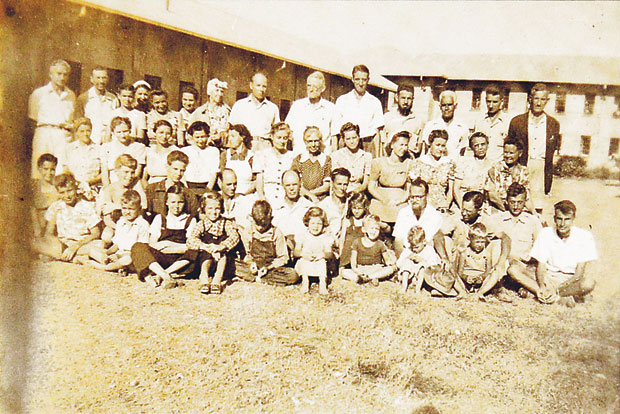 Father William R. McCarthy explained just how close their deliverance had been. Whether or not the Japanese were actually planning to massacre the internees on the same day of their rescue, February 23, was irrelevant in the long run. Father McCarthy said, "At the time of our rescue, the camp doctor (Dana Nance) told me that most of the prisoners would have died of starvation within another month."
Father William R. McCarthy explained just how close their deliverance had been. Whether or not the Japanese were actually planning to massacre the internees on the same day of their rescue, February 23, was irrelevant in the long run. Father McCarthy said, "At the time of our rescue, the camp doctor (Dana Nance) told me that most of the prisoners would have died of starvation within another month."
One of the Los Baños rescuers, Robert A. Edwards, who served in the 11th Airborne Division's D Battery, 457th Parachute Field Artillery Battalion, would later write a touching poem about the raid. Here are his final lines:
It was then I knew I was seeing God!
I saw Him in the eyes of the toughened soldiers;
I saw Him in the eyes of the sick and suffering souls!
And suddenly I wanted to fall upon my knees in prayer...
I opened the doors to the chruch of my being,
The music was sung by the choir of my soul,
The sermon of Love was delivered by God
And found its place in my heart, my heart.
Strongly influenced by the Miracle at Los Baños that day in 1945, this rescuing Angel would later become a Doctor of Divinity.
When I think of the Angels like Robert Edwards, those brave young men who were willing to die that day to liberate the internees, I think that they "(executed) justice for the oppressed;" and (gave) food to the hungry" and were the instruments of "The Lord (who set) the prisoners free." (Psalms 146:7).
When one of the internees tried to say that it was the troopers who deserved the credit, not Heaven, a young Angel replied, "Well, we know God did it."
Secretary of the Army John O. Marsh, Jr. wrote in 1989, "That raid, deep behind Japanese lines, ranks among the most daring and successful in our nation’s history…"
Yet for over 2,000 men, women and children, and their thousands of descendants, the Los Baños Raid on February 23, 1945, was a day that God sent the Angels to rescue his faithful from behind enemy lines. It was a powerful witness that He had "(heard) the groaning of the prisoner... (and loosed) those that (were) appointed to death;" (Psalms 102:20).
Major Tomas Mesereau, who had commanded the 511th PIR's C Company which had come across on the Amtracs and then battled Japanese forces on Mayondon Point, would read the words of the apostle Paul decades later, "The angel of the Lord by night opened the prison doors and brought them forth."
Standing before a room full of his comrades and their wives, then-Lieutenant Colonel Mesereau added, "That passage is not specific as to whether the angel was wearing an Eleventh Airborne 'patch'."
Mesereau then read Psalms 68:17 which says, "The chariots of God are twenty thousand, even thousands of angels." Tom then added, "This does not detail whether the chariots were C-47 planes or amphibious tractors."
75 years ago the "prison door(s)" at Los Banos were opened by the Angels who "brought them (the internees) forth" and brought them back to safety in "chariots of God" otherwise known as Amtracs.
Decades after the war, the 511th PIR's beloved chaplain Dr. Lee E. Walker wrote, "I wish I had the financial resources to erect a gigantic tablet in stone where everyone could read the names of our officers and men who gave their lives so that others might live in freedom..."
-Jeremy C. Holm
To learn more about the Los Baños Raid, please view this article of the 75th anniversary of the mission, or click on one of the videos below:
Jeremy Holm: The Liberation of Los Banos
When Angels Fall: From Toccoa to Tokyo, the 511th Parachute Infantry Regiment in World War II
To learn more about the 11th Airborne Division in World War II, please consider purchasing a copy of our books on the Angels:
